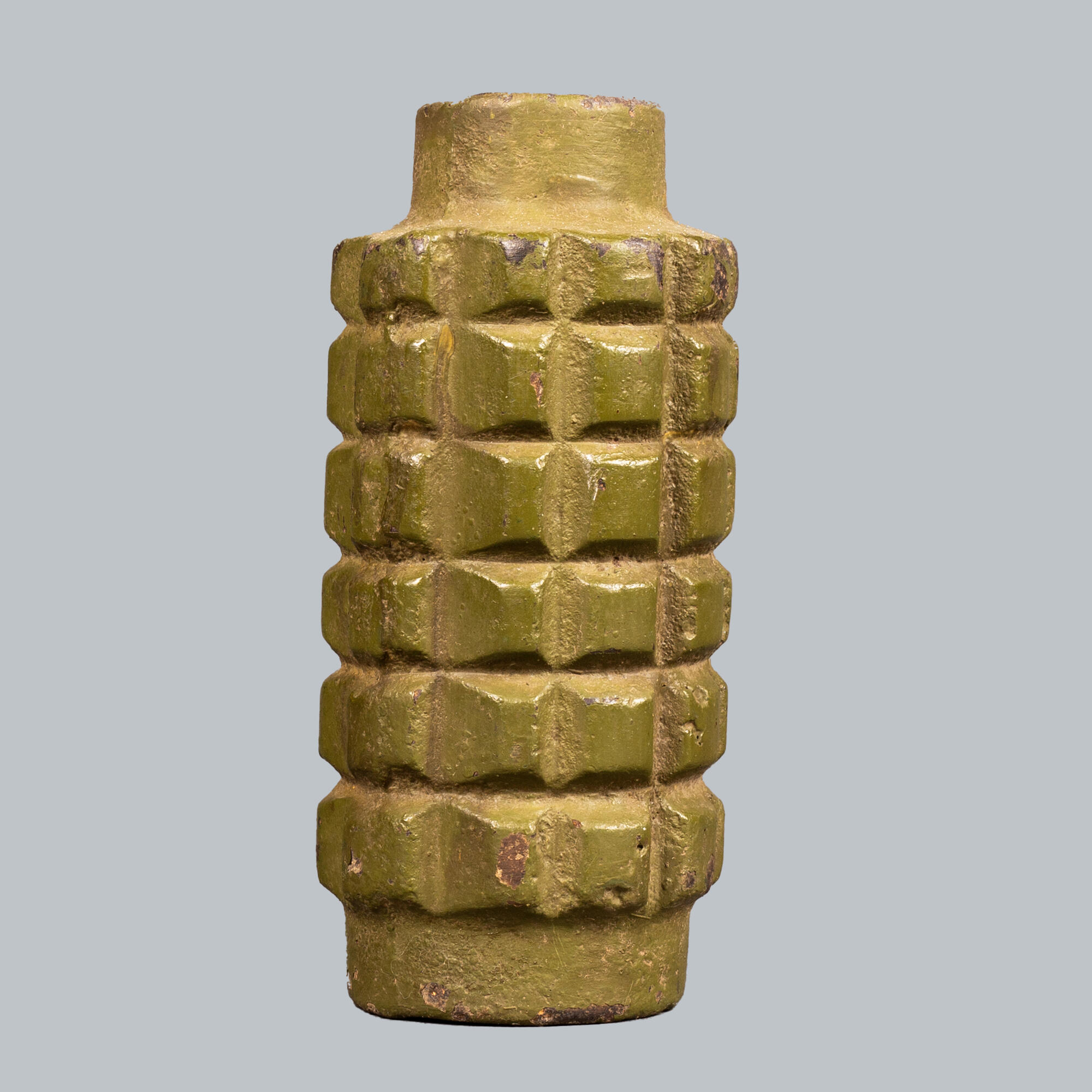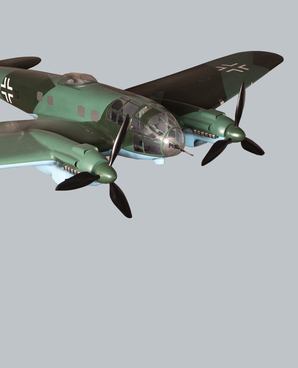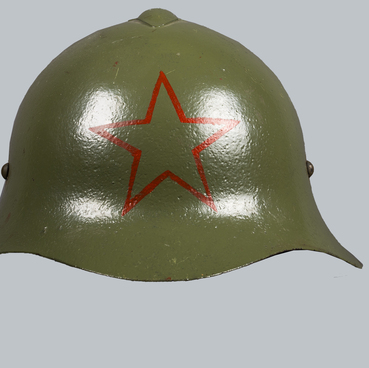In the Russian Empire, mines were still under development. All mines were homemade. On October 6, 1919, by order of the Revolutionary Military Council, a military engineering training ground was established at the Main Military Engineering Directorate of the Red Army. It initiated the planned work on the development of mines for the Red Army.
Fundamental studies of the properties of various explosives, as well as research of radio detonators began for the development of new blasting systems and mining equipment. By the beginning of the Great Patriotic War, it was possible to work out and test a large number of mines for various purposes.
The exhibit presented in the museum is a POMZ-2 anti-personnel fragmentation obstacle mine. It consisted of a cast-iron body in the form of a ribbed cylinder with notches on the outside. They were needed for a more even fragmentation.
This mine had a nest for a TNT charge. The design included a MUV type fuse with a P-shaped switch, and an MD-2 fuse. A wire and two wooden stakes were needed for installation.
The Soviet engineers Pavel Grigoryevich Radevich and Nikolay Pavlovich Ivanov designed the POMZ-2 in the autumn of 1941. During the Great Patriotic War, several modifications were produced.
The simple design made it possible to reproduce it literally in the field partisan workshops, in addition, many countries copied the Soviet model: for example, the German Stockmine of the 1942 model is an exact copy of the Soviet mine. The POMZ-2 was actively used in the post-war period. It was one of the few mines that was not discontinued after the end of World War II.
The POMZ-2 weighed 1.5 kilograms; the explosive charge of TNT weighed 75 grams. The diameter of the sleeve was 6 centimeters, and the height — 13 cm. The length of the target sensor (in one direction) was 4 meters; the sensitivity ranged from 1 to 17 kilograms.
The blast radius of the POMZ-2 was 4 meters. The range of possible scattering of fragments was 25 meters. The MUV type tripwire-activated fuse was used (it was possible to use the UV, UVG, MUV-2, MUV-3 fuses as well). It could be used in all temperature conditions: from -60 to +60 degrees Celsius. The mine did not have a self-destruct mechanism.




